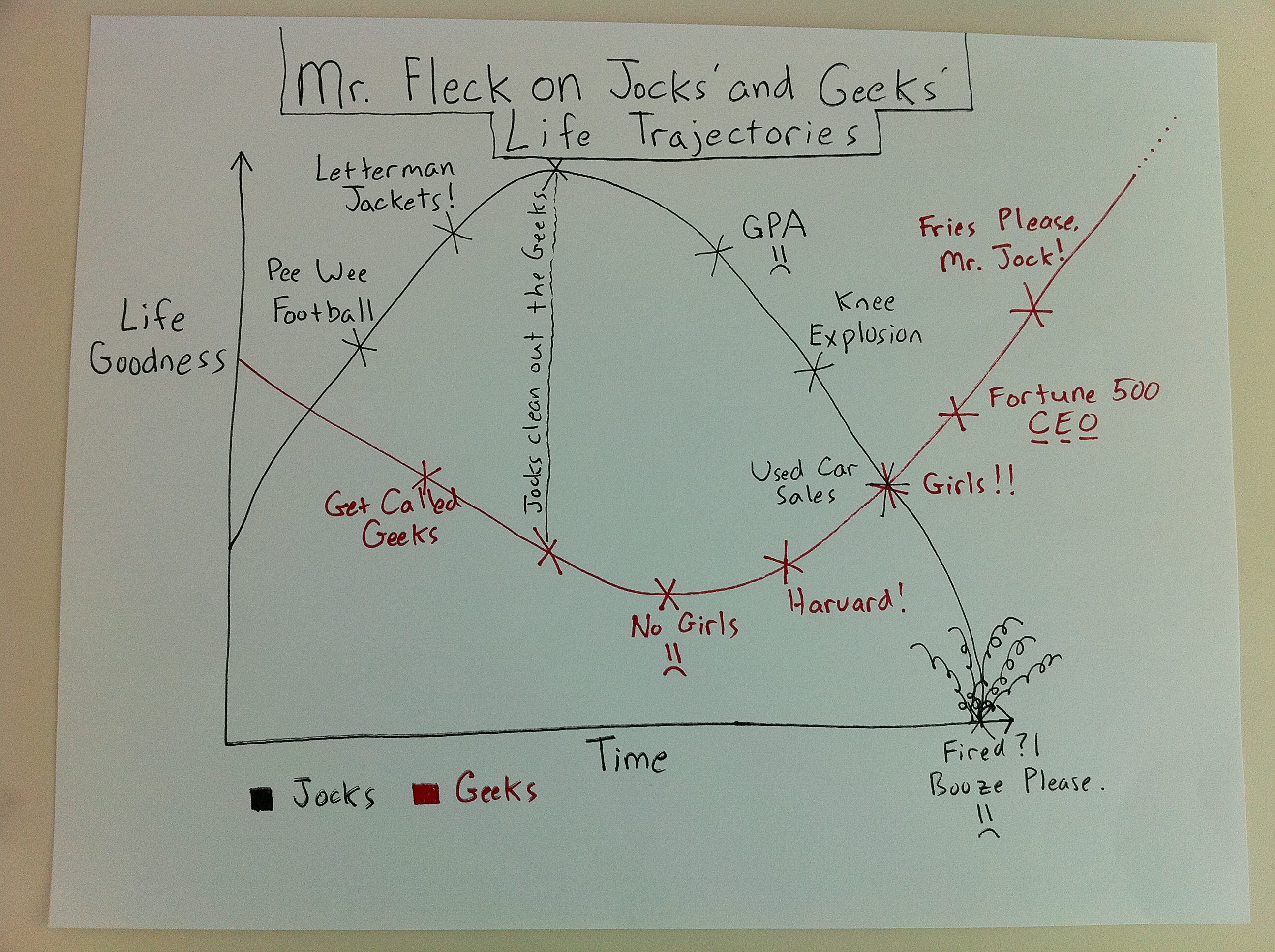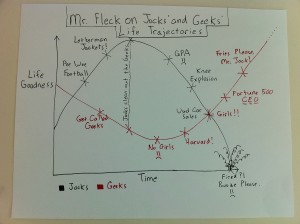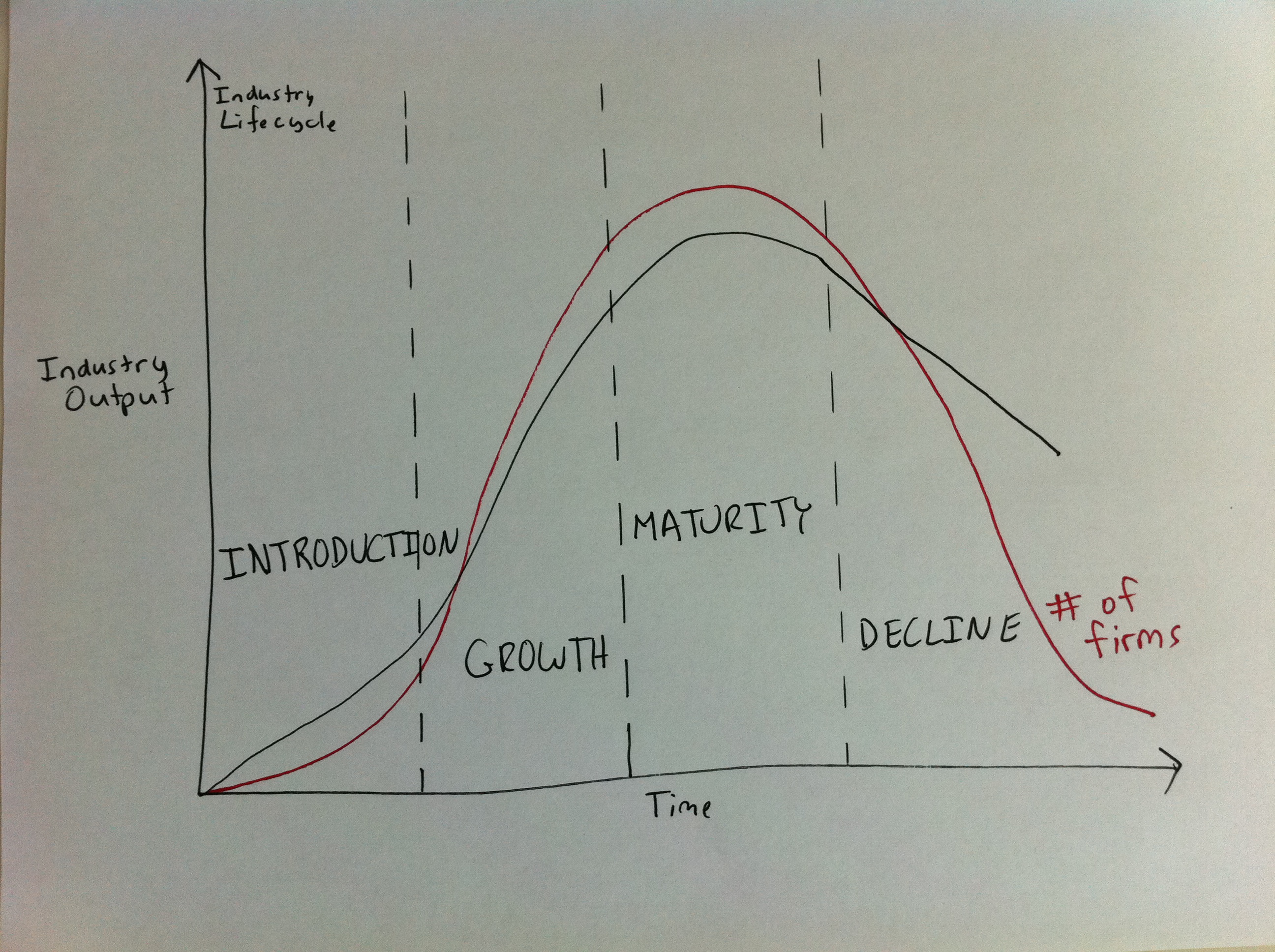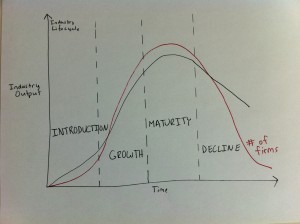I’ve seen rumblings, mostly con, on Twitter and Facebook about Florida’s current educational reform. I’ve had quite a bit of trouble actually finding a summary of the reform plan, although I found a lot of articles about it. So I’ve tried to cobble together what seem to be the basic tenets of the plan, and I’m going to try to address them, mostly from an economic perspective.
If you just want to see the Cliffs Notes version, jump down to the Conclusion.
Eliminate Tenure – Tenure in academia and secondary education appear to be totally different animals called by a common name. In a university setting, I understand that tenure is designed to allow proven, experienced academics to pursue research and teaching methods that may be considered risky or controversial. It’s also seen as a draw for quality professors who are looking for job security. Secondary (used here to mean “primary and secondary”) educators don’t do research – on controversial topics or otherwise – and aren’t really known for trying out new teaching methods. So tenure really seems to be more of a reward for having stuck it out for some number of years. “You’ve put in some years, so we’re going to make your employment extremely stable.” In academia, it appears to be designed to draw quality professors and encourage risk taking and innovation. In secondary education, it seems more like a perk rewarding teachers for working in the profession and encouraging them to stick around.
I’m having trouble wrapping my mind around the benefit to society provided by tenure in secondary education. I definitely see the benefit to teachers – job security and regular pay increases – but I can’t quite see how that benefit necessarily translates into better-educated students and a better society. There are very few professions that will guarantee pay increases and erect barriers to termination just because a person has been in a job for a while. This is because “years on the job” doesn’t guarantee that a worker will produce a superior work product, and it can be very expensive to continue employing ineffective employees. In the case of teaching, employing an ineffective, tenured teacher means that society is paying a premium for poorly educated students. Not only is this expensive, but it ultimately damages society and prevents us from hiring good replacements due to budget constraints.
I hope that most tenured teachers are superior to their un-tenured colleagues, but what about the ones who aren’t? They are the most expensive teachers, and their cost prevents hiring younger, cheaper teachers to give them a shot.
Merit-based Pay – As I understand the Florida secondary education tenure system, the primary data point used to determine merit increases is years on the job. There is a performance appraisal, but I understand it’s mostly a formality. The economy may affect pay, but only if the state or county determines that things are so bad it can’t afford to give raises this year. If this happens, the unions go to work, defending their constituents, making it difficult for government to deny raises, and deterring government from even trying to do so. (NOTE: This post isn’t about unions. But I think it’s silly to try to decouple unions from a discussion of education reform, so I’ll allude to unions a few times here.) The result seems to be almost-certain pay increases based almost exclusively on years on the job. It’s also extremely difficult to fire a teacher unless the teacher does something particularly egregious. Producing poorly performing students doesn’t seem to be considered egregious so much as a result of externalities like student home life or poorly designed standardized tests. As a result, teachers are generally not fired for producing bad results – they’re either left alone or possibly moved to another school if local parents make enough noise.
The plan seems to address this by replacing tenure with merit-based pay. If tenure were totally eliminated, teachers would be evaluated annually, and their contract would need to be renewed or discontinued every year. Right now, their three-year contracts auto-renew. This switch from tenure to merit-based pay makes sense to me in general, although it seems that we’re very short on the details of how merit will be assessed.
In most professions, a performance appraisal and measurement against some metrics is about all that is necessary. Typically, the metrics are called “goals” or “objectives” for the employee. At the beginning of the year, the employee’s manager helps the employee define the goals or the goals are simply disseminated from company management. At the end of the year, the employee receives a performance appraisal where he is evaluated qualitatively by his manager and quantitatively by comparing his actual performance to his goals. The results of the performance appraisal are typically used to determine what, if any, merit increase the employee will get that year (better performance means potential for a greater merit increase and poor performance often means no merit increase). A lot of other factors will contribute to potential increases as well: the economy, how the employee is paid relative to what the market is paying (often handled in a separate “market adjustment”), the company’s performance in the previous year, etc.
Merit-based pay for teachers is tricky because there don’t seem to be well-defined metrics. We also don’t know the market rate for teachers because teaching isn’t really a “market” per se. That basically leaves us with the economic climate to help determine teacher pay. But, as mentioned before, teacher unions typically resist allowing a poor economy to affect teacher pay. From an outsider’s perspective, it looks very much like the unions aren’t interested in finding ways to evaluate teacher performance and create a good product (viz, well-educated students), but in protecting teachers’ jobs and pay. Of course, this is totally intuitive: unions don’t exist to improve the quality of products, they exist to protect their own constituents.
Merit-based pay seems to be a good alternative to tenure in that in enables administrators and local governments to identify, reward and retain the better teachers, and weed out the poorer teachers. The trick is determining how to evaluate teachers accurately. Whether the new plan will provide reliable ways to evaluate teachers remains to be seen.
Vouchers – But teacher pay really only tackles the supply side of the equation: how do we encourage teachers to produce a good product and retain those who do? Evaluating pay and incentive structures, budgeting, and allocating teaching resources are all top-down approaches to evaluating education. Markets also consist of a demand side: who consumes the product and how do they determine which version to consume if there are substitutes? This lack of a demand side in secondary education is a big reason there isn’t a real market for teachers or education. Enter vouchers.
What if we gave a student the option to spend his money at the local school, which is known to be a crummy school, or at any number of other schools including private ones? Now does the local school and its teachers have an incentive to provide a better education? Yes, because its customers now have access to substitutes that were not available before. Vouchers are ultimately good because they promote competition. They actually create a market for education and subsequently provide a better education and may lower education costs by introducing efficiencies.
If we look at things from the local school’s perspective, I think this becomes more obvious. Without vouchers or some other form of competition, a local school has a more or less guaranteed customer base. The kids who grow up within a certain radius of the school must go there unless they can go to a magnet school or their parents can afford to send them to private school. So the school knows that it will definitely get a certain number of kids every year just because it exists. All it has to do is collect its funding from the county, hire some teachers and the rest pretty much takes care of itself. What incentive is there for the school to improve its performance? Where will its customers (the students) go if it performs poorly?
When there’s a market offering equally-priced substitutes, customers will choose the best substitute. If I go to McDonald’s and get a bad hamburger, I’ll go next door to Burger King and see what they have to offer. If Burger King stinks, I’ll try Wendy’s. If Wendy’s stinks? I might just decide not to spend money on a hamburger. What happens if a student goes to a school for an education and the education his school provides is poor? Not only is there no Burger King or Wendy’s (unless his family can afford private alternatives), but he must spend his money at that school. Even parents who pay for their kids to attend private school still have to pay into the public education kitty. The student is forced to buy a product from a single provider and he has no alternatives. The school is a local monopoly whose product is secondary education. What incentives does the school have to provide a better product when it has a captive customer base? Sure, we can try to provide indirect incentives like threatening to cut funding if they don’t produce better test scores, but there is no direct way for the consumer of the product to choose substitutes and punish the school for a poor quality education.
But if we allow the student to spend his money at any school – public or private – the schools must compete for that student’s money. Competition forces producers to make better products and use their resources more efficiently because they can’t rest on their laurels and just assume that their current customers will be their future customers.
Conclusion
It seems like the plan might also involve some tax deduction shenanigans and other smaller items, but most of the chatter I’ve seen doesn’t focus on these. I couldn’t find enough information to even describe the other factors, so I’m just going to leave them alone.
What’s really baffling about all this is that, at the macro level, there is an ongoing, decades-long discussion around how we can improve our educational system – how we’re falling behind other countries in educational output, how our students aren’t as prepared as students from other countries – and yet we refuse to evaluate the quality of our educators in order to promote the good ones and replace the bad ones. This conversation was going on for years before Milton Friedman wrote about the need for education reform in his 1979 book “Free to Choose”, and yet all the talking doesn’t seem to be affecting actual student performance. We seem to be asking how we can improve the quality of our country’s education product (and typically the answer seems to come back, “spend more money”) while refusing to evaluate the producers of that product.
Other groups need to step in and give it a shot. Modern technology should make this relatively easy by offering an “educators” version of Consumer Reports, or a website for parents to rate their kids’ teachers, or a peer evaluation system or some other way of identifying those teachers who are doing good work. The LA Times attempted to do this, but that attempt was strongly rebuffed by the unions as they called for a boycott of the Times:
The Los Angeles teachers union president said Sunday he was organizing a “massive boycott” of The Times after the newspaper began publishing a series of articles that uses student test scores to estimate the effectiveness of district teachers.
As the LA Times discovered, there is a lot of data out there, but it can be difficult to evaluate that data and determine how to proceed without more science to help us understand how to identify good teachers. Just looking at data doesn’t tell us anything – we need to know what we’re looking for and we need to be prepared to act on what we find.
The current reform in Florida seems to be heading in the right direction. Merit-based pay seems to be a more transparent and effective way to evaluate our teachers, identify the good ones and reward them for their good work. Although the metrics and methodology required to actually evaluate teachers’ merit don’t seem to be well defined, that may be because they weren’t previously required for teacher evaluations, and because the unions have been resisting this kind of evaluation. If these metrics and methods for evaluation haven’t happened organically to this point, it seems unlikely that they’ll ever happen without some burning platform. Vouchers seem like a no-brainer to me as they would create a competitive market for education, improving quality and potentially reducing cost.
What do you think? Am I misunderstanding the proposed reforms? Overestimating the value of competition in education?




